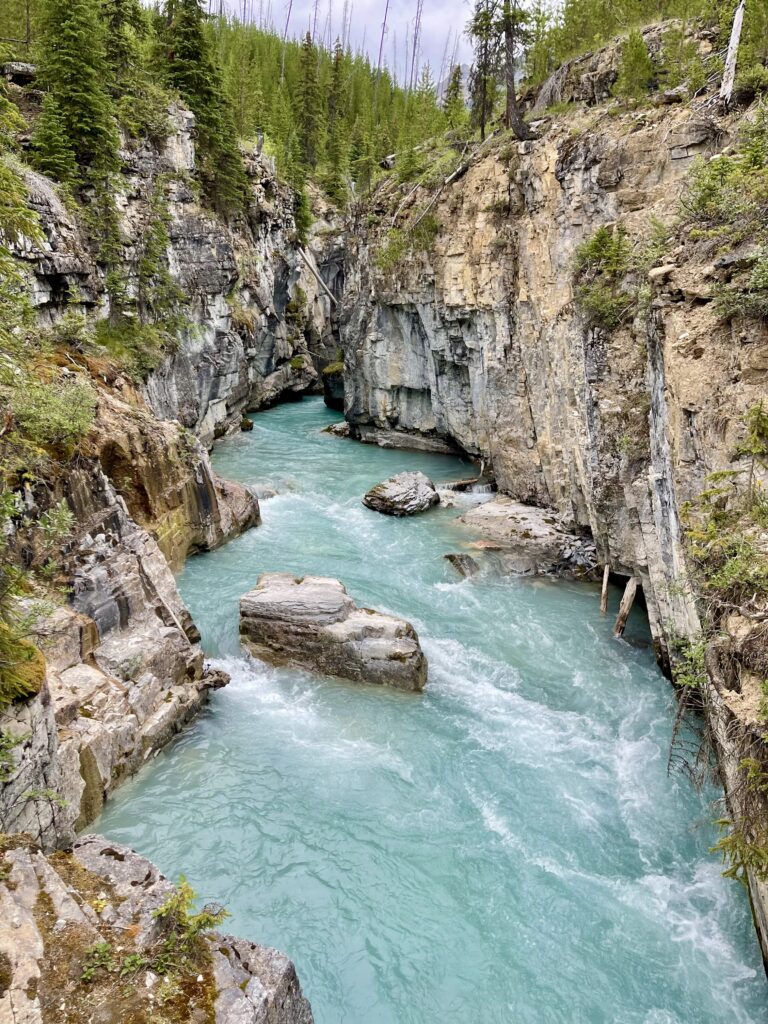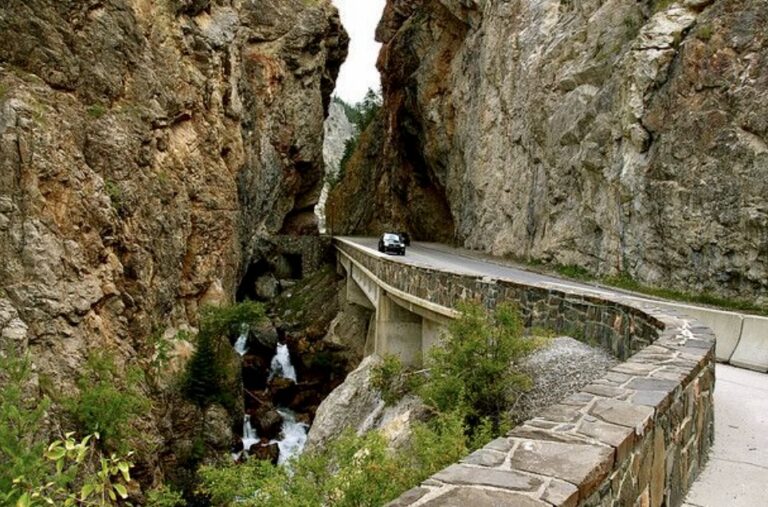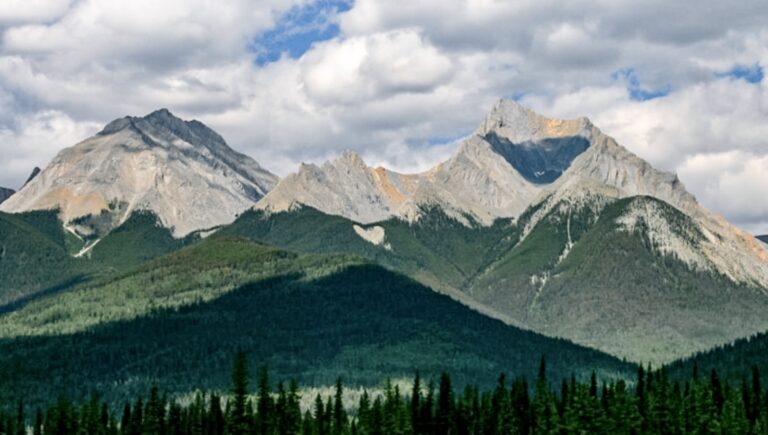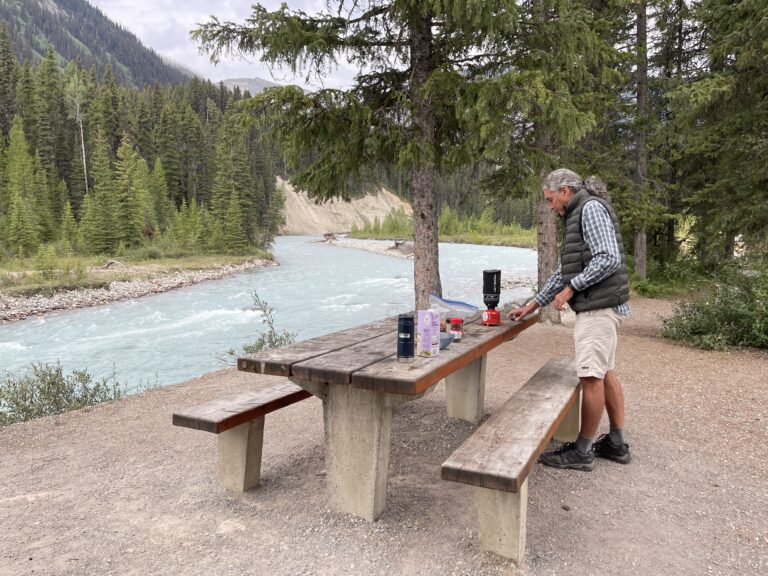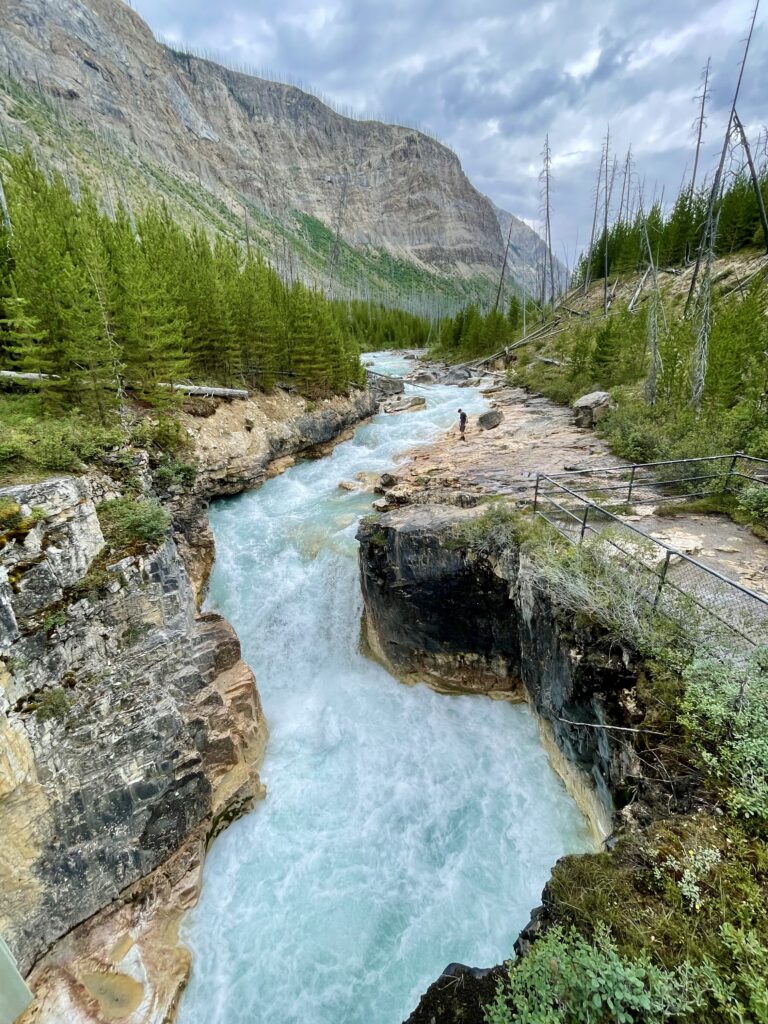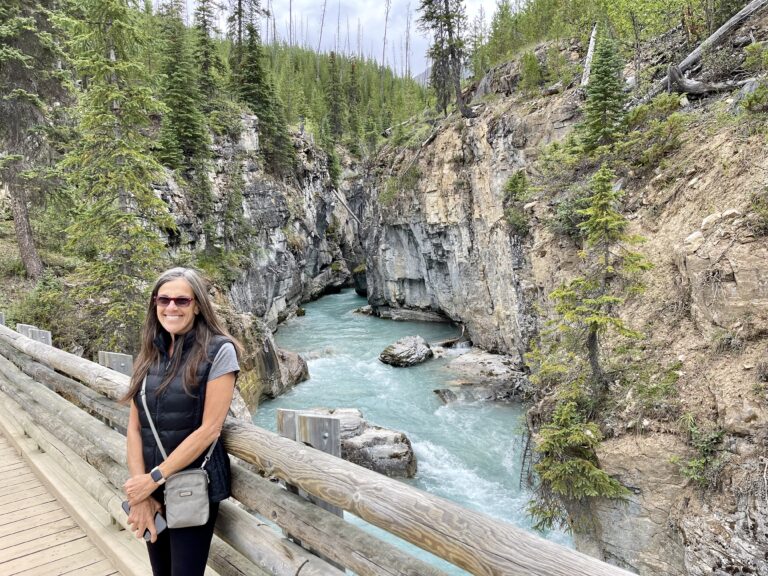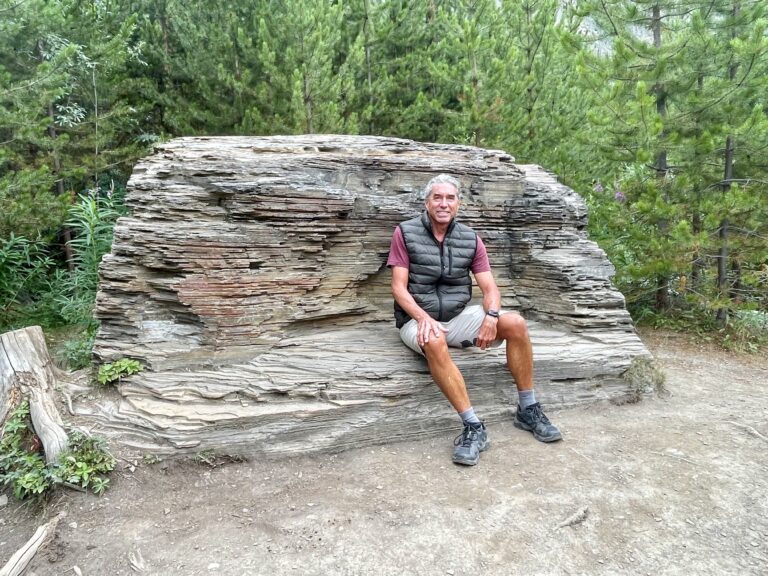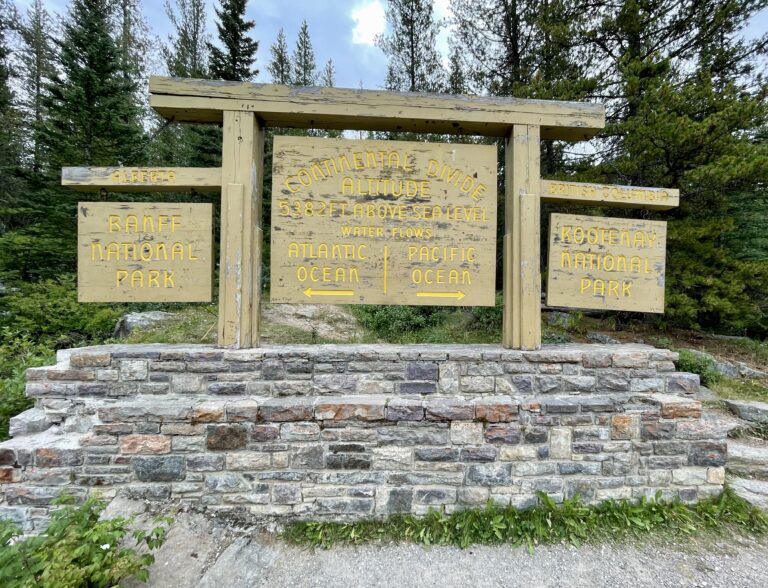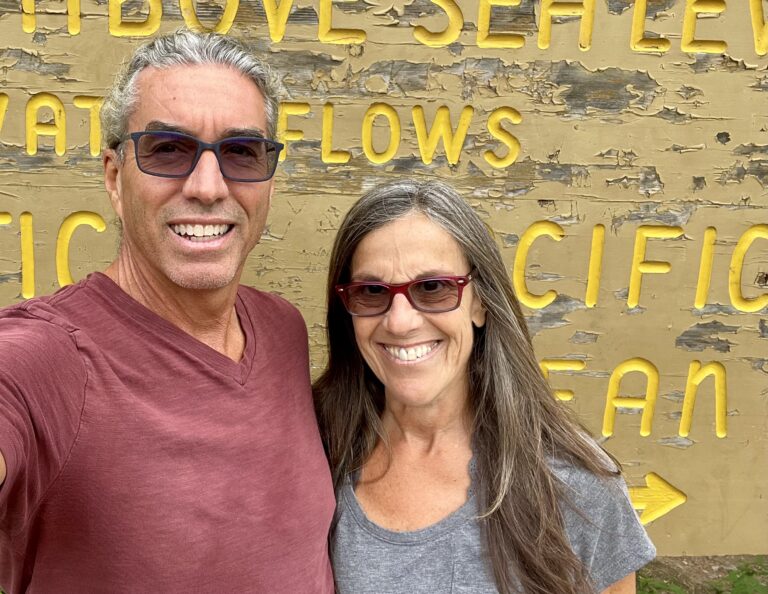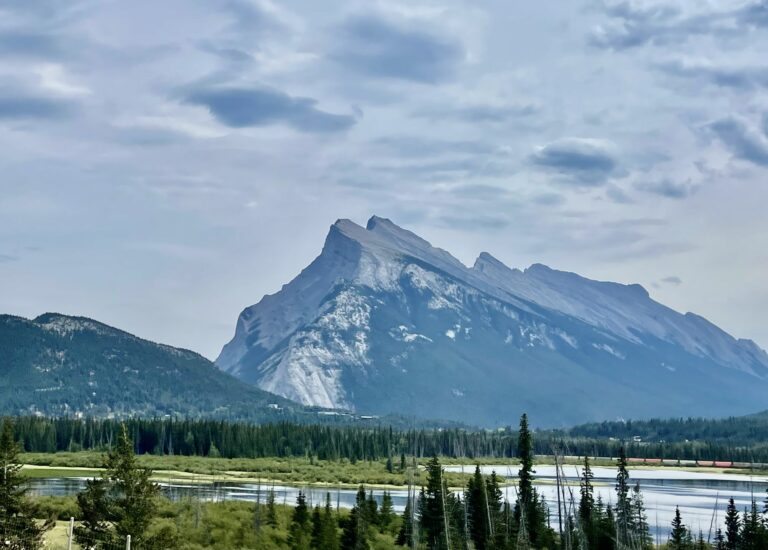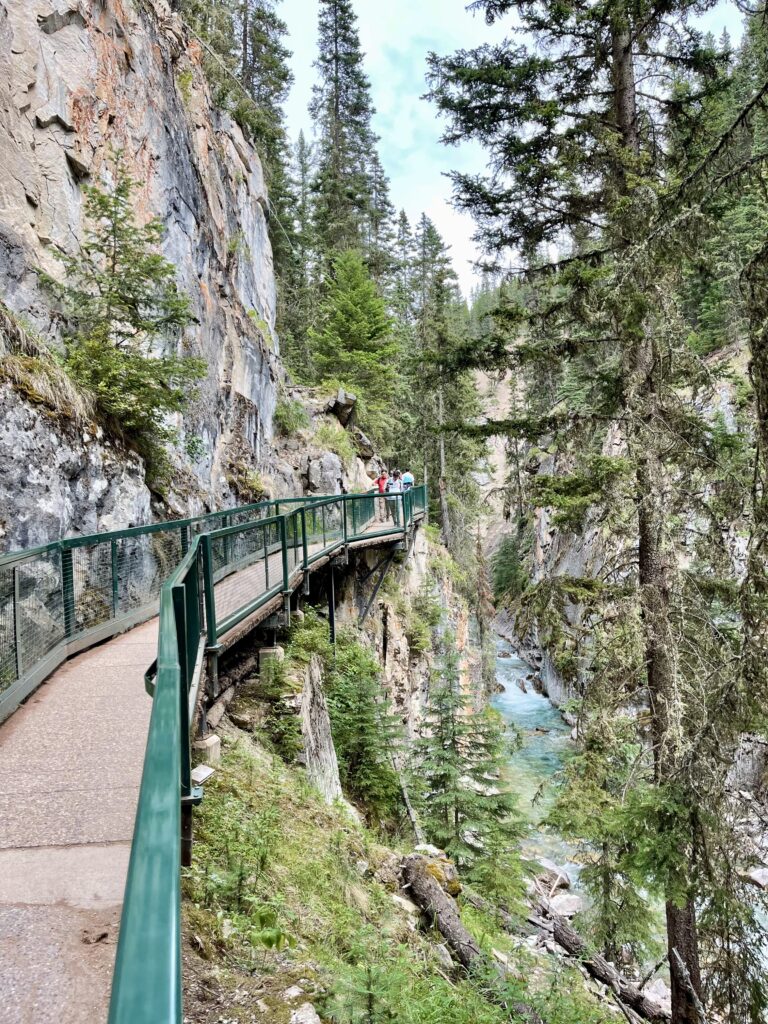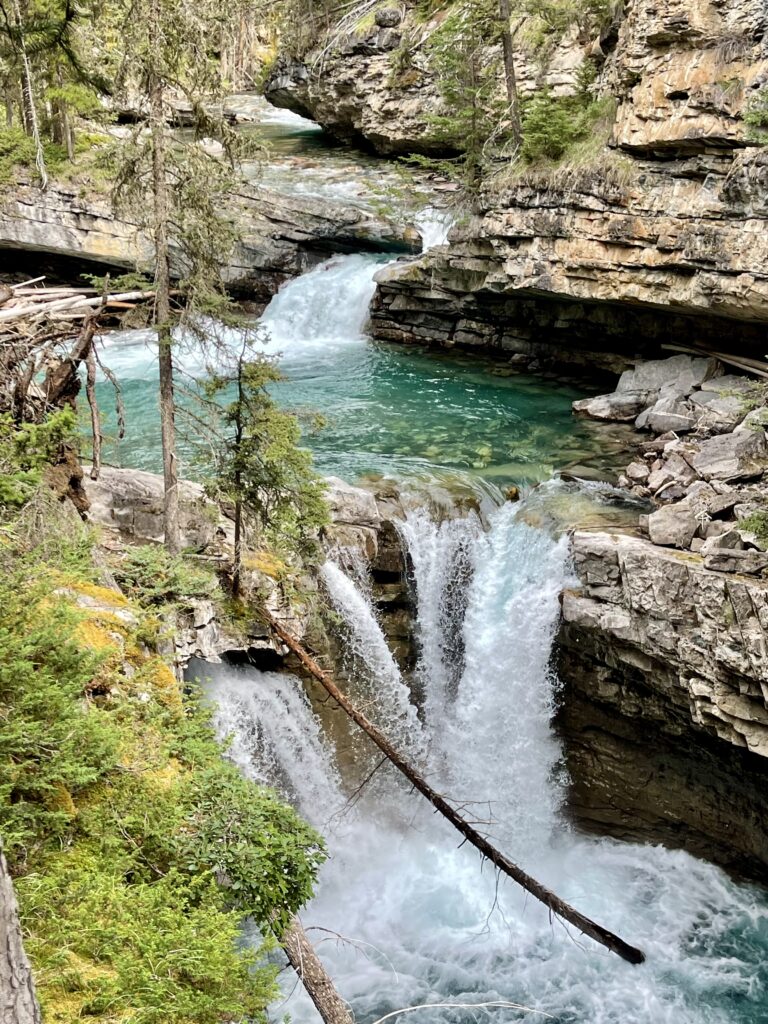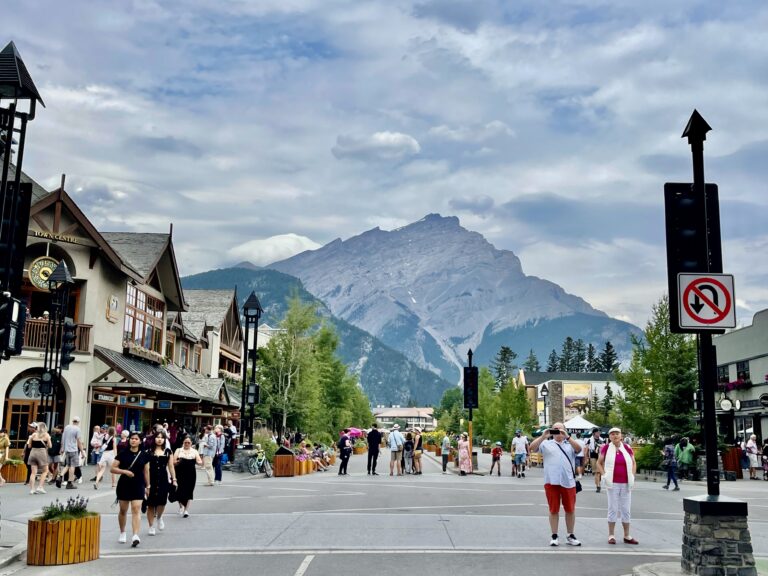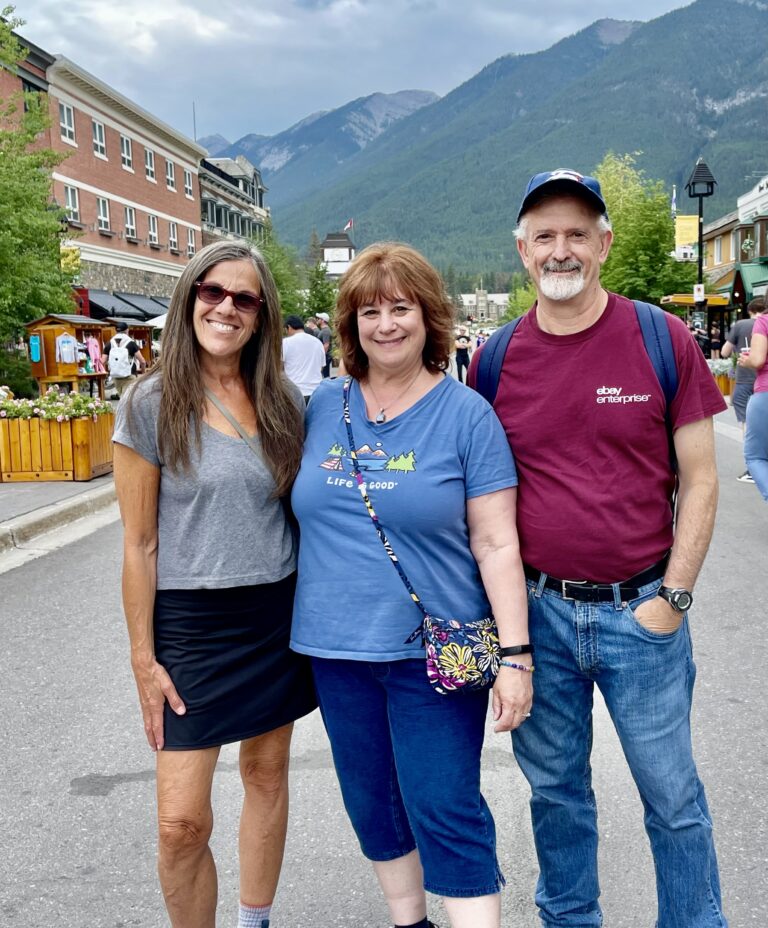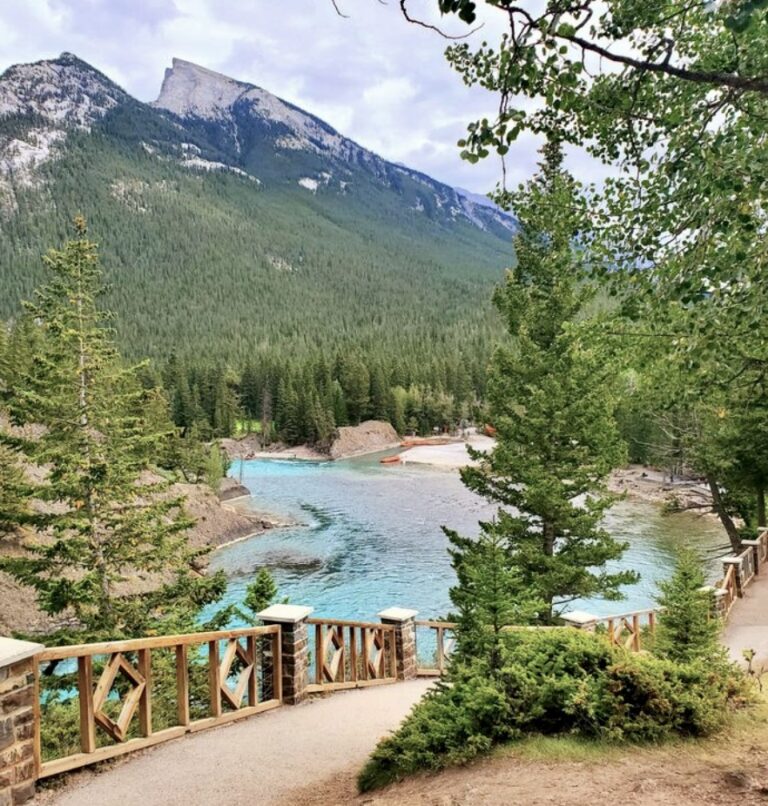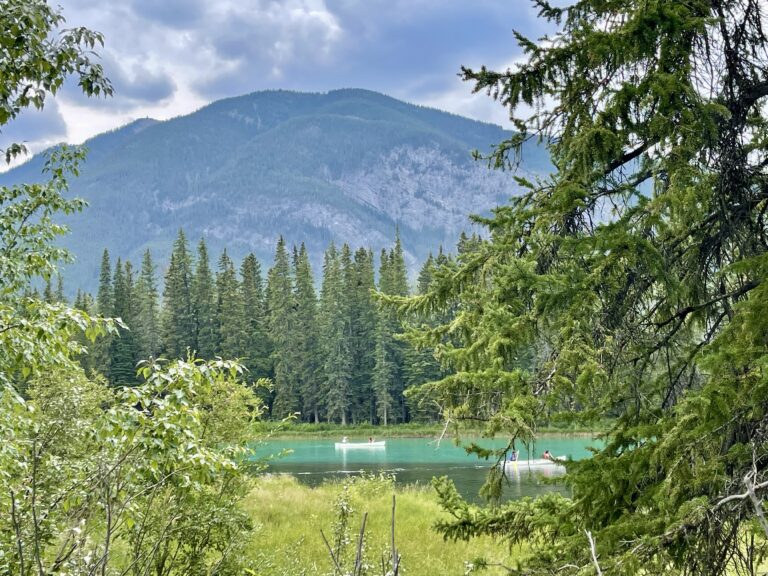August 10, 2022
Fortunately, it didn’t rain during the night and the steep trail was dry. But the wind died just as we got into the truck for the night and suddenly we were swarmed with mosquitoes. We’d put up the magnetic window screens and the little devils danced all around them looking for an opening. We’d already worn out a pair of SkeeterBeeter screens and had just gotten a new set with no holes and watched as the mosquitoes were inexorably drawn to us. It turned out to be a very warm night for this elevation and latitude and we had to run the little 12-volt fan most of the night. Morning was much cooler but several lethargic mosquitoes were still on the screens hanging on to the dream of a meal as we flicked them off.
We crawled down the steep dirt path in 4wd low, then headed back into the town of Radium Hot Springs for coffee. The lines were so long we decided to skip it, head toward some of Canada’s best national parks and Susan would make her own coffee.
The Banff-Windermere Highway from Radium Hot Springs, BC to Banff, Alberta is one of BC’s most stunning roads. The highway almost immediately enters the Kootenay National Park. We paid CAN$42 to a grumpy park employee (uncharacteristic in Canada) for a two-day pass that provided access to Kootenay, Banff, Jasper, and a few other National Parks. Canada does things a little differently with their national parks compared to the U.S. Not only do they have a multi-park-park pass, but also the 4,600 mile-long Trans-Canada Highway passes right through Banff National Park but you only pay if you’ll be visiting the park, otherwise you simply pass through.
As we entered the park, Susan was giddy with excitement. She’d been to the Canadian Rockies during one of her hitchhiking trips during her college years and had been eager to return, and even more eager to show me the beauty of the area.
After the Kootenay park entrance, the Banff-Windermere Highway passes through stunning Sinclair Canyon, goes through a tunnel, climbs to a summit at Sinclair Pass then follows the roaring glacier-fed Vermilion River.
We found a gorgeous (and spectacularly clean) picnic area along an incredible milky glacier-blue river and had breakfast in the still-cool morning. A group of Harleys roared in and I chatted with one of them for a few minutes. Fifteen people from Holland and Belgium were making their dreams come true, riding from Seattle to Glacier Park to Banff. They all had on brand new Harley gear, surely bumping Harley Davidson’s bottom line.
After breakfast, we stopped for a two-mile roundtrip hike up very narrow Marble Canyon at the confluence of Tokumm Creek and the Vermilion River.
A rushing stream of more glacier-blue water thundered over rocks as it twisted its way to the river.
Back in the truck, it was just a few minutes until we made a brief stop at the continental divide, and about fifteen minutes later we were on the Trans-Canada highway, had entered Alberta and found ourselves in spectacular Banff National Park.
As we turned off the highway and drove farther into the park, the scenery became breathtaking. Jagged granite peaks, some with snow still at the top seemed to be everywhere. The smooth two-lane road was in excellent shape with a low speed limit, allowing for a leisurely trip.
By now it was late morning and we were ready to try to find a campsite for the night, as we’d been told park sites fill up early. Boondocking isn’t permitted in the national parks, but several campgrounds were first-come first-served. We arrived at Protection Mountain campground, nestled at the base of its massive namesake, just after the 11:00 am checkout time and found several decent sites available. Most were bare of trees and shade, but it was no longer as hot out and the openness allowed for magnificent views of the surrounding mountains.
After paying for the site, we headed back out. The next planned hike was in Johnston Canyon—another trail that followed a rushing creek. This one led upstream to two waterfalls and, given that this was in popular Banff, it was far more crowded than Marble Canyon.
The trail was beautiful, with a well-maintained concrete walkway bolted into the canyon wall and multiple waterfalls. This area, unlike back home in California and much of the western US, was not in danger of too little water. Smaller falls gave way to taller and wider ones as we made our way up the trail. It was warm and snow was melting fast at high elevations making the rivers high. More snow would begin falling in a month to replace the melted snow. We joked (mostly) that in a few millennia, however, the canyons we were hiking might end up becoming someone’s favorite desert slot canyon.
From there, we headed into the town of Banff to meet Susan’s sister and her husband who had coincidently planned a trip to Banff months before. We had a great time wandering through the town with them. We explored a farmer’s/craft market, went into a few shops, then took a walk through the town park along the Bow River. Susan commented that Banff had grown quite a lot from the small mountain town it had been when she was there decades ago and had become far more touristy, but we were pleased it wasn’t ridiculously crowded and it had a less pretentious feel than other tourist-driven mountain towns like Aspen or Taos.
After an early dinner at a Cajun restaurant, we bid adieu to family and headed back the 20 miles or so to the campground, where we swatted mosquitoes until we were driven inside the truck. Before bedtime, I decided to go to the bathhouse and see if I could find Susan’s coffee thermos that I’d accidentally left there earlier after washing it and sure enough someone had put it on a windowsill so whoever lost it would see it. Canada was living up to its reputation as beautiful and friendly.

